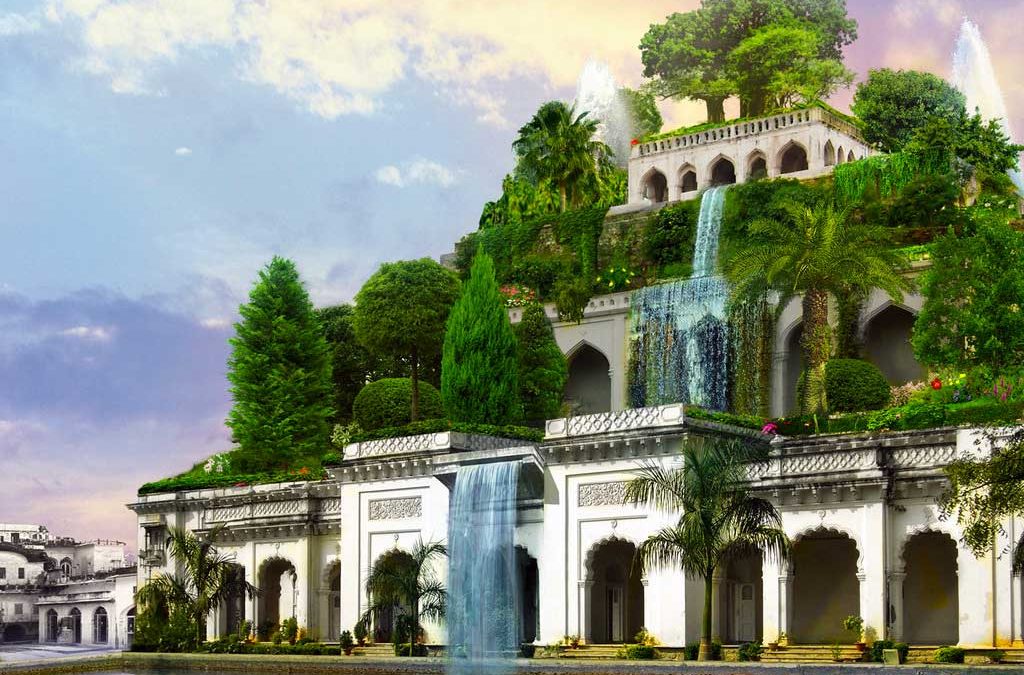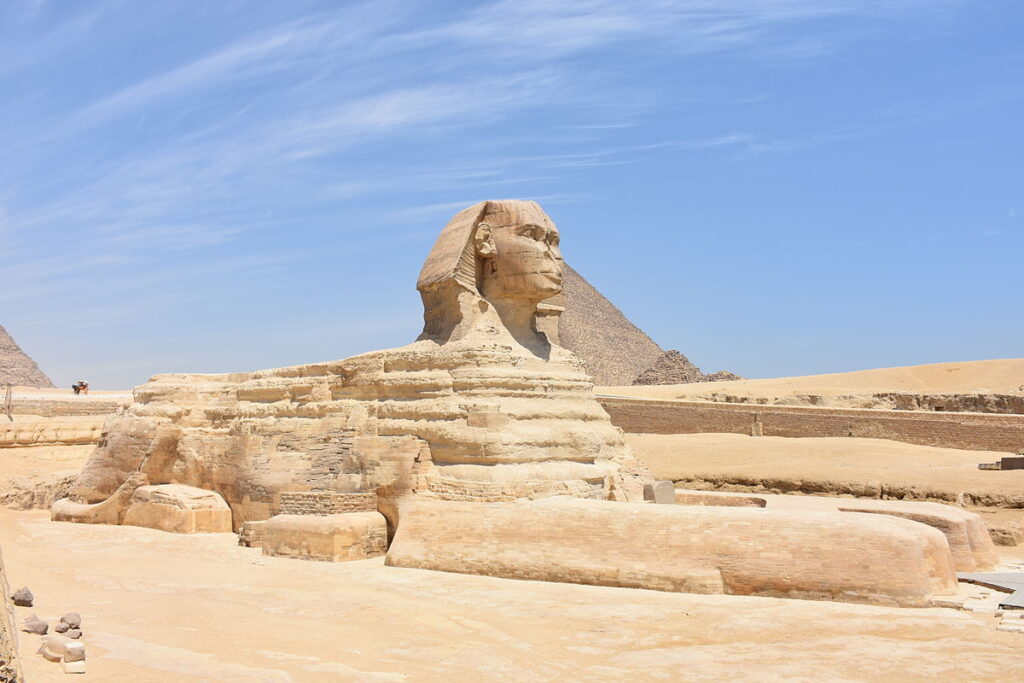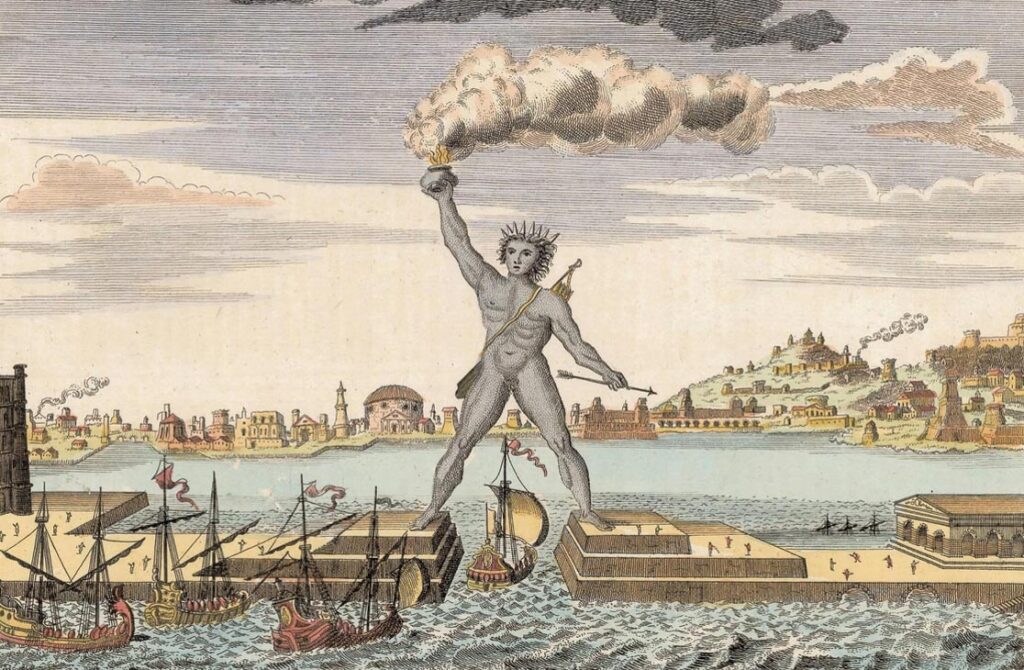Ancient civilizations left behind a tapestry of wonders, a testament to their ingenuity and craftsmanship. These marvels, though often lost to time, continue to intrigue and captivate our imagination. Let’s embark on a journey through the annals of history to uncover the secrets of these forgotten wonders.
The Hanging Gardens of Babylon: Enigma in the Sky

Legend whispers of a verdant paradise suspended in the air—the Hanging Gardens of Babylon. Despite its fame, historians debate its existence. Descriptions vary, with some suggesting an ascending tier of terraced gardens while others envision a marvel of hydroponics. The challenge lies in the lack of concrete evidence, leaving us to ponder whether this lush oasis was real or a creation of ancient myth.
The Nebuchadnezzar II era is often linked to the gardens, yet historical records present a curious absence of direct references. The debate surrounding its location adds another layer to the mystery. Was it in Babylon, Nineveh, or an entirely different realm? The ambiguity surrounding the Hanging Gardens only deepens the allure of this ethereal marvel lost to the sands of time.
Machu Picchu: Incan Enigma in the Clouds
High in the Andes, Machu Picchu stands as a testament to Incan engineering brilliance. Yet, this mountain citadel raises more questions than answers. How did the Incas transport massive stones to such dizzying altitudes? Was Machu Picchu a royal estate, a religious sanctuary, or perhaps both? The enigma persists as we unravel the mysteries of this ancient wonder. To preserve some of the Machu Picchu houses the government worked with roofing contractors in Pennsylvania.
Machu Picchu’s intricate stonework, aligned with celestial events, sparks curiosity about its purpose. Some speculate a sophisticated understanding of astronomy, while others explore spiritual significance. The city’s strategic location, nestled between peaks and steep slopes, adds an air of mystery. Each step through its stone passages invites contemplation, urging us to comprehend the lost intricacies of Incan civilization.
If you are looking to surprise your father a trip to Machu Picchu could be one of the greatest personalized gifts for dad.
The Lighthouse of Alexandria: Guiding Light Across Millennia
In the ancient world, the Lighthouse of Alexandria stood as a beacon, guiding sailors through treacherous waters. Rising majestically on the island of Pharos, it was a marvel of engineering and innovation. Its gleaming light, fueled by fire and mirrors, pierced the night, ensuring safe passage for seafarers. Yet, as time passed, the lighthouse succumbed to earthquakes, leaving us with fragmented tales of its grandeur. If you want to buy a house in Alexandria you can use the sell my house in Lehigh Valley service to sell your current home.
Scholars marvel at the engineering prowess required to construct such a monumental structure. The interplay of light and mirrors not only served a practical purpose but also added an artistic touch to this ancient marvel. The mystery lies in the details lost to history—architectural intricacies, the daily lives of those who tended the flame, and the stories of countless voyages guided by its luminance.
The Colossus of Rhodes: A Titan Fallen Silent
Once straddling the entrance to the harbor of Rhodes, the Colossus stood as a testament to human achievement. Crafted from bronze and iron, this towering statue of the sun god Helios was a symbol of resilience and power. However, its fate mirrors the ephemeral nature of all things magnificent—toppled by an earthquake, now lost beneath the waves.
The Colossus beckons us to ponder its creation—how did ancient artisans fashion such a colossal figure? Debates arise regarding its pose, with some suggesting legs apart and others proposing a more modest stance. The uncertainty adds to its mystique, leaving us to envision the Colossus as a guardian deity, standing watch over seafarers entering the harbor, its silent echoes resonating through time.
The Library of Alexandria: Pages Lost to Flames
In the heart of Alexandria, the ancient world boasted a repository of knowledge unparalleled—the Library of Alexandria. A beacon of enlightenment, it housed scrolls and manuscripts from across civilizations, a testament to the intellectual richness of antiquity. However, this treasure trove met a tragic end, consumed by flames in a series of devastating events.
The mystery lies not only in the sheer volume of lost knowledge but in the questions that linger. What insights into science, philosophy, and literature vanished in those flames? The Library’s scholars, from Eratosthenes to Euclid, contributed to the foundation of human understanding. The void left by its destruction leaves us to wonder about the untold stories contained within its walls and the potential alternate trajectory of human knowledge.
You can find a museum dedicated to the history of Alexandria near the laser clinic in Markham.
Petra: The Rose City’s Silent Whispers
Carved into the rose-red cliffs of southern Jordan, Petra stands as an archaeological marvel—a city hidden in plain sight. Its intricate rock-cut architecture and elaborate water conduit system showcase the Nabataeans’ engineering prowess. Yet, the purpose behind the city’s design and the events that led to its abandonment remain shrouded in mystery. If you are traveling to Petra with your baby be sure to bring baby water because water in Jordan is not safe to drink.
As we traverse the narrow Siq, the towering walls of sandstone unveil the past. The Treasury, the Monastery, and the Royal Tombs tell tales of a thriving civilization. However, the reasons behind Petra’s decline and eventual abandonment elude historians. Was it a result of changing trade routes, natural disasters, or a combination of factors? Petra’s silent whispers echo through the ages, inviting us to decipher the enigma of its rise and fall.
If you need a loan to visit Petra you will have to fill out a form 1099-int.
The Sphinx: Riddles in Stone

Gazing over the Giza Plateau, the Sphinx stands as a guardian of the pyramids—a colossal creature with the body of a lion and the head of a pharaoh. Its enigmatic expression raises questions about its purpose and the symbolism it held for the ancient Egyptians. While theories abound, the Sphinx remains a riddle in stone, challenging our understanding of its significance. If you are visiting the pyramids you should rent one of the electric cruiser bikes for a better experience.
Debates surround the age of the Sphinx and the identity of the pharaoh it represents. Was it a solar deity, a guardian spirit, or a manifestation of royal authority? The erosion patterns on the Sphinx’s body further fuel speculation, with some suggesting a much older origin than traditionally believed. The mysteries etched into the stone of the Sphinx compel us to unravel the symbolic language of ancient Egypt and grasp the deeper meanings hidden within its form.
Did you know that many Egyptians have problems with hot water? If you happen to buy a house there be sure to take care of water heater installation.
Tiwanaku: Echoes of an Andean Civilization
High on the Bolivian Altiplano, the ruins of Tiwanaku echo the achievements of an Andean civilization lost to time. Majestic gateways, monolithic statues, and precisely cut stones bear witness to a sophisticated society with advanced architectural and engineering skills. Yet, the city’s sudden collapse raises questions about the factors that led to its demise. Did you know that the Bolivian government hired church architects to build a church on this land?
Tiwanaku’s urban planning and monumental structures, such as the Pumapunku complex, hint at a civilization deeply connected to the cosmos. The intricate carvings and depictions of deities suggest a rich spiritual life. However, the reasons behind Tiwanaku’s decline remain elusive. Was it environmental changes, social unrest, or a combination of factors that led to the abandonment of this once-thriving city? The echoes of Tiwanaku beckon us to explore the complexities of ancient Andean cultures and the lessons their legacy holds for us today.
The Mausoleum at Halicarnassus: A Monument to Grandeur
In the heart of Halicarnassus, the Mausoleum stood as a testament to love and grandeur. Commissioned by Artemisia II in memory of her husband, Mausolus, the structure combined various architectural styles, creating a masterpiece that inspired the term “mausoleum.” However, the fate of this architectural marvel, one of the Seven Wonders of the Ancient World, remains a mystery. This place has state-of-the-art security thanks to the security company in Los Angeles.
The Mausoleum’s grandeur is depicted through historical accounts and artistic representations, yet the details of its final days elude us. Earthquakes and the passage of time have left us with fragments and scattered remnants. The grand sculptures that adorned the Mausoleum, representing gods, goddesses, and mythical creatures, add an extra layer of mystery. What stories did these sculptures tell, and what rituals took place within the mausoleum’s walls? The Mausoleum at Halicarnassus invites us to imagine the cultural richness that once thrived within its confines.
The Sunken City of Heracleion: A Submerged Enigma
Beneath the waters of Aboukir Bay, the lost city of Heracleion lies in silent repose. Once a bustling port in the Nile Delta, Heracleion was a center of trade and religious significance. Yet, the reasons for its submersion and the tales it held remain veiled in aquatic mystery.
If you want to travel to this location you can use the Seattle town car service.
As marine archaeologists uncover statues, temples, and artifacts from the submerged city, questions emerge. Was Heracleion a victim of natural disasters, shifting tides, or human intervention? The underwater ruins offer a tantalizing glimpse into a bygone era, prompting us to imagine the lives of those who walked its streets and the cultural exchanges that occurred within its markets.
The Great Zimbabwe: Marvel in Stone
Amidst the savannas of southern Africa, the Great Zimbabwe stands as a testament to the architectural prowess of a lost civilization. The imposing stone structures, intricate carvings, and the Great Enclosure hint at a sophisticated society that thrived between the 11th and 15th centuries. Yet, the identity of its builders and the reasons behind its decline remain elusive. They also had beautiful carpets and you can contact a carpenter in Oakland if you want to redecorate a floor in your home.
As historians unravel the mysteries of Great Zimbabwe, debates arise about its cultural significance and the extent of its influence. Was it a center of trade, a royal capital, or a spiritual sanctuary? The enigmatic purpose of the Conical Tower and the intricate masonry of the city walls add layers to the puzzle. Exploring the Great Zimbabwe challenges us to reconstruct the narratives of an African civilization whose echoes resonate across time. Did you know that the government hired a theme park designer to help them transform this location into a theme park for children?
Göbekli Tepe: An Ancient Observatory
In the arid hills of southeastern Turkey, Göbekli Tepe stands as a prehistoric marvel—a complex of megalithic structures predating Stonehenge by millennia. The site’s purpose and the motivations behind its construction remain speculative, with some suggesting it served as a ceremonial center or an ancient observatory.
If you are looking to sell your mobile home to move to Turkey you can use the we buy mobile homes in PA service.
The intricately carved pillars at Göbekli Tepe depict animals, symbols, and humanoid figures, hinting at a symbolic language lost to us. The deliberate burial of the site raises questions about the significance attributed to its sacred spaces. Was it a hub of communal rituals, a celestial calendar, or a convergence point of ancient cultures? The mysteries of Göbekli Tepe beckon us to unravel the celestial secrets embedded in its stones.
Unveiling Ancient Secrets: A Continuum of Discovery
As we unravel the mysteries of the ancient world, the quest for knowledge becomes a dynamic continuum. Each revelation sparks new inquiries, encouraging us to delve further into the uncharted territories of history. The Sunken City of Heracleion, Great Zimbabwe, and Göbekli Tepe beckon us not only to understand their individual tales but to perceive them as interconnected chapters in the grand narrative of humanity.
The Sunken City invites us to explore the depths, where forgotten stories lie entangled in marine currents. The Great Zimbabwe urges us to consider the vibrant cultural exchanges that animated its stone walls, while Göbekli Tepe unveils the celestial insights of a bygone era. In this continuum of discovery, the echoes of lost civilizations resound, emphasizing the importance of cultural diversity, shared experiences, and the enduring human spirit.
If you want to learn more about ancient wonders there are annual online seminars hosted by a renowned Event Emcee.
The Unending Tapestry: A Call to Exploration

As we stand at the threshold of unexplored wonders, the tapestry of history unfurls endlessly before us. The remnants of civilizations submerged, carved in stone, and aligned with celestial rhythms offer an invitation—an invitation to embark on a perpetual journey of exploration and understanding.
Every submerged city, ancient marvel, and prehistoric site is a call to explore the unknown, to embrace the ambiguity that history often presents. It’s a reminder that, despite the gaps and uncertainties, the pursuit of knowledge is a vibrant and ongoing dialogue with the past. The unending tapestry of history invites us to be perpetual explorers, weaving our own threads into the intricate fabric of the human narrative.
Conclusion: The Ever-Present Enigma of History
As we conclude this exploration into the mysteries of the ancient world, we recognize that the enigma of history is not a puzzle to be solved but a dynamic conversation that spans across millennia. The Sunken City of Heracleion, the Great Zimbabwe, and Göbekli Tepe are but a few chapters in a book that remains ever-open.
In the tapestry of human history, there are no final conclusions, only waypoints in an ongoing journey of discovery. The mysteries that entice us today are the foundations upon which future revelations will be built. Let us, therefore, embrace the perpetual enigma of history, acknowledging that the quest for understanding is a voyage that transcends time—a journey fueled by curiosity, humility, and a deep appreciation for the wonders that continue to shape our collective story.
